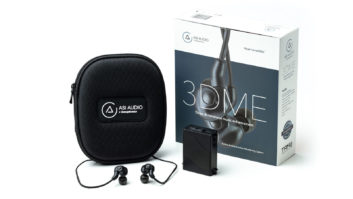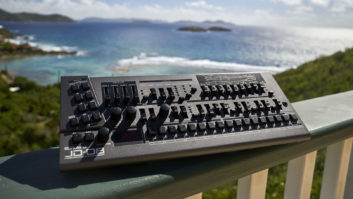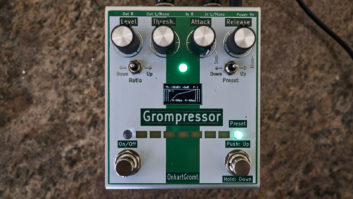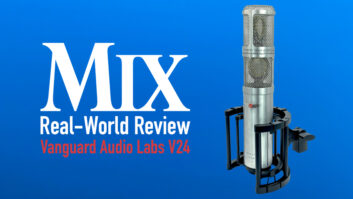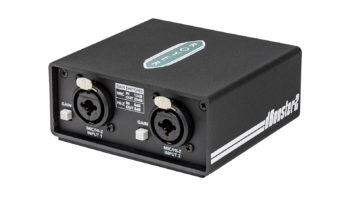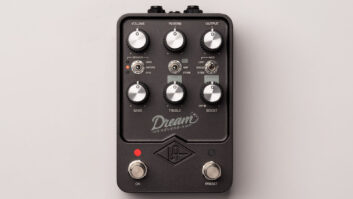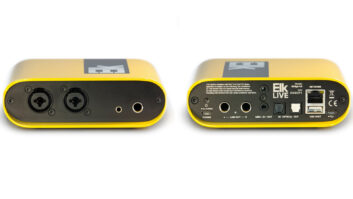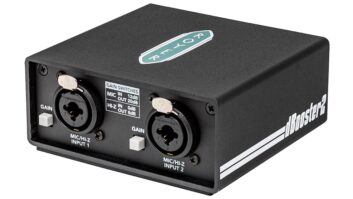It makes complete sense that the world’s foremost ribbon microphone manufacturer would get into the mic signal booster/impedance buffer game, as the performance of ribbon mics is greatly affected by the preamp with which they are coupled, and adding a signal booster/impedance buffer into the chain makes ribbon mics sonically compatible with virtually any mic pre. While some of the other products I’ve seen in this category perform well, they tend to alter the sound substantially (some even offer variable impedance to provide creative control of how the sound is altered) and they tend to add noise and distortion. That’s where Royer differs, as the phantom-powered R-DB20 dBooster ($179) provides the benefits of increasing the gain of a passive microphone without adding noise or distortion, and without altering the sound.
The dBooster is built into a rugged one-piece aluminum box measuring roughly 3.6 x 2 x 1.6 inches. One end has a female XLR connector for microphone input and a push button switch that selects between 12 dB and 20 dB of clean gain boost. The other end has a male XLR connector for signal output. Made in the United States, the crush-proof enclosure will easily survive the rigors of road use, making it a great option for live sound as well as studio use. While powered by 48-volt phantom power, no voltage is passed through the device’s input stage, so there is no danger of accidentally applying voltage to a microphone.
When inserted between a passive microphone (ribbon or dynamic) and a mic pre, the dBooster increases the level with minimal distortion and coloration. A front panel switch selects either 12 dB or 20 dB of clean gain boost, and the headroom is maintained regardless of load. Output is a low-impedance increased microphone-level signal that can either directly drive the input of a digital interface or plug into a microphone preamplifier. Boosting the level of a low-output microphone allows the mic preamp to operate in its optimum gain range, resulting in a better sound. Mic pre’s pushed to maximum or near maximum gain frequently lose their linearity and become noisy and distorted; the dBooster eliminates this problem. It also diminishes signal loss resulting from long cable runs, making it a good solution for lengthy mic cables in sound reinforcement situations.
dBooster opens a new range of uses for a long list of microphones that could previously be used in only a limited number of situations. I’ve been using it for several months now and have made the most of the flexibility it has provided.
I’ve always loved the sound of my SF-1 as an ambient mic, capturing the room sound of a string quartet or acoustic guitar, but it’s always been a challenge, as most mic preamps don’t have enough gain, and if they do, they become noisy before the signal reaches a usable level. This is solved with a 20 dB gain boost from the R-DB20.
Coupling the R-DB20 with my mic collection has been an eye-opening treat. My Beyer M160 beautifully captures a fingerpicked Martin acoustic and my Shure SM-7B works as well with soft, whispery vocals as with loud, aggressive singers. While there are some exceptions to the rule, I’ve found that setting the dBooster to 12 dB works in close-miking situations, and the 20 dB setting works for distant miking.
Whether you want to increase the flexibility of your current mic collection or you want to be able to better interface with low-gain portable interfaces, the Royer R-DB20 dBooster is a great option.
Royer Labs • www.royerlabs.com
